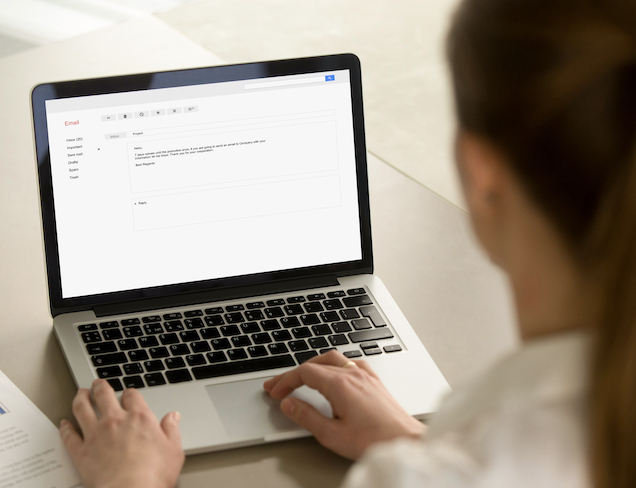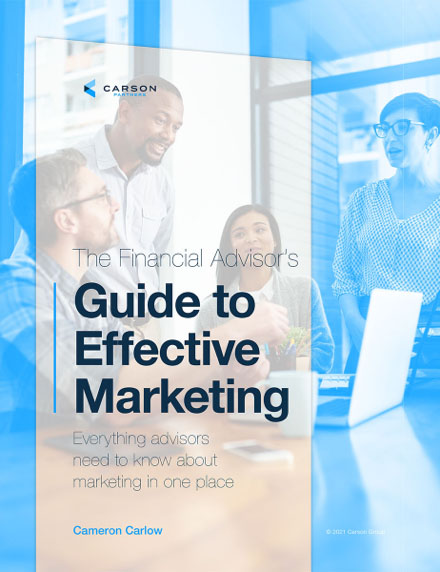Email marketing for financial advisors is a powerful way to engage with clients and prospects. By leveraging the benefits of email marketing, financial advisors can stay top of mind, provide valuable content and foster trust – ultimately driving business growth.
However, a successful strategy entails more than just writing down your thoughts and hitting “send.” Here’s what to know about effectively using email marketing for financial advisors to help you achieve your business goals.
Table of Contents
- The key benefits of email marketing for financial advisors
- Using the automated email journey to nurture relationships
- Timing matters for effectiveness in email marketing for financial advisors
- The power of newsletters in email marketing
- Don’t neglect email best practices
The Key Benefits of Email Marketing for Financial Advisors
As financial advisors navigate an increasingly competitive landscape, it’s crucial for them to leverage a diverse range of marketing tools to attract, engage and retain clients. Despite the rise of newer and sometimes flashier digital marketing channels, email marketing for financial advisors remains a reliable and potent tool, thanks to its relatively low cost, high reach and personalized approach.
According to Hubspot’s “State of Inbound Marketing Trends” report, small businesses use email for a variety of reasons, but the top three are to improve customer loyalty and retention, increase revenue and generate leads. Most financial advisors would concur with those goals.
Marketing can be a complex, multi-touch effort, but it’s important to think about it in terms of “stages.” The first stage, known in marketing parlance as “top of funnel,” entails introducing your firm widely, perhaps through social media posts or SEO techniques like paid advertising for relevant keywords on search engines. At the top of the funnel, the aim is to create awareness among potential clients.
Email is a tactic that sits just below, in the “middle” of the funnel. These prospects are now aware of your brand from top-of-funnel activities and have begun to interact with you – maybe they visited your website and signed up to receive updates or downloaded a piece of content.
Because they’ve willingly offered you their contact information, they’ve indicated their interest in learning more about your firm. Now it’s your job as an advisor to keep that conversation going. Using email marketing to show up in their inbox is an ideal way to build a relationship with these prospects.
Using the Automated Email Journey to Nurture Relationships
It’s easy to get overwhelmed with irrelevant emails, isn’t it? When people offer their email address, your goal with email marketing for financial advisors becomes to match your message and cadence to their interests.
For that, you need to understand where prospects are in their journey:
- Are they in the exploration phase, where they are trying to figure out if they need an advisor at all?
- Are they in the consideration phase, where they know they need an advisor and are considering alternatives?
- Are they in decision-making mode, where they have enough information to meet to discuss how you can help them reach their goals?
But before you begin firing off missives, pause to engage in a mapping exercise to ensure you’re sending the optimal message at the most favorable time.
Start by analyzing your website traffic to see where visitors are converting and sharing their email address, such as offering it in exchange for a high-value piece of content or signing up for a newsletter.
After you’ve identified these conversion points, divide them into categories: maybe one group downloaded retirement information and another was interested in an event the firm was sponsoring. That context will provide clues to the best way to nurture them.
For example, those prospects interested in retirement information could receive a link to a podcast. If they download it right away, you might ask if they are ready for a consultation. Or, if the email goes unopened, see if they’d prefer a different type of content, like a video or ebook.
If there’s still no response, you could pause your outreach or send a dropdown menu where they can indicate their challenges, such as saving for college, tax efficiency or retirement. This can help you tailor the journey to their interests and also keep your email list clean.
Timing Matters for Effectiveness in Email Marketing for Financial Advisors
We all know that feeling of too many messages clogging our inbox, and you might be wondering when to send for maximum interaction. The good news is there is no universal magic answer – it may take some trial and error and analyzing your metrics to unlock the best times for you.
Industry benchmarks can provide a good starting point. For example, a compilation of several studies identified Thursday as the best day to send in 2023, overtaking Tuesday as the previous preferred date. The top three times, in order, were 10 a.m., 9 a.m. and 8 a.m. Many people start their workday cleaning out their inboxes, so the 10 a.m. send can help yours stand out.
Then conduct your own research to see if your metrics align. If your clientele is avid travelers, Thursday might be the day they’re buried in deadlines so they can hit the road. You can also track when people seem to click on links the most; for example, they might give an email a cursory read on Wednesday, then conduct additional research on the weekend.
In terms of cadence, be mindful of when you are sending regularly scheduled emails, such as newsletters, blog posts or investment updates, and how those coincide with other more personalized client outreach, like invitations to events or confirmation of regular reviews. You don’t want important messages to be ignored because clients received a flurry at once.
The Power of Newsletters in Email Marketing
Many advisors struggle to differentiate themselves, so newsletters can offer a customized way to better connect with target clients by letting your personality shine through. I have worked with a number of Carson advisors who have done this with great success.
For example, a classic car enthusiast fills his newsletter with information on collectible cars and shows and discusses the investment potential of various types of vintage or luxury automobiles. Another has built his entire client book off contacts he meets as a sport fly fisherman, taking excursions all over the world and thereby connecting with clients who share his interest and look forward to his updates on trips and competitions, along with investment news.
These are just two examples of how you can niche down, yet still find a sufficient number of prospects in specific segments. Presenting your authentic self via this type of themed newsletter will attract clients with whom you’ll have a natural affinity.
You can use the majority of the same copy for clients and prospects with minor tweaks. For example, clients (but not prospects) are interested that your office is going to be closed for a long weekend or a long-time advisor is retiring.
The biggest difference in messaging will entail your call to action. Financial advisors always want to encourage established clients to offer reviews or share referrals, but that would be presumptuous to include in a newsletter for readers who aren’t yet a client. You might encourage that segment to take a quiz about their money mindset or download a podcast about working with an advisor.
Don’t Neglect Email Best Practices
Finally, I wanted to include a short word about making sure your emails comply with recommended guidelines:
- Only send emails to people who have opted in; for example, they clicked on a link and offered their email address or they attended an event you sponsored where it was clear they would be receiving promotional outreach. You never want to use purchased email lists.
- Use an email marketing company like Campaign Monitor (my personal favorite for small businesses), HubSpot (the preferred vendor for Carson) or Mailchimp, which will make sure you’re following the latest privacy practices, such as offering a prominent unsubscribe button.
- Work with your compliance department to ensure your messages include all the necessary disclosures.
After that, it’s up to you to unleash your creativity to design email campaigns that are engaging and appealing to your subscribers.
Invest in Success with a Stronger Email Marketing Program
Email marketing for financial advisors can help you enhance client relationships, increase brand awareness and achieve business goals. Could you benefit from additional advice in how to level up your marketing to cut through the noise and make your voice heard? Download our new reference piece, “Carson’s Guide to Effective Marketing,” today.




